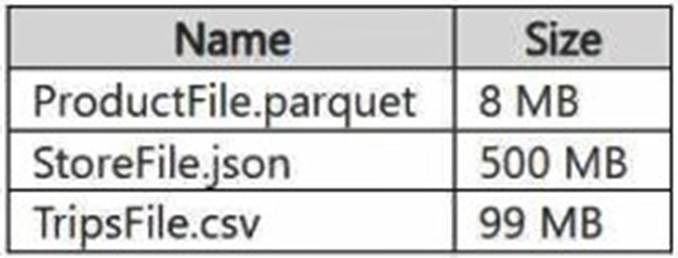- (Topic 3)
You have a Fabric workspace named Workspace1 that contains a warehouse named Warehouse1.
You plan to deploy Warehouse1 to a new workspace named Workspace2.
As part of the deployment process, you need to verify whether Warehouse1 contains invalid references. The solution must minimize development effort.
What should you use?
Correct Answer:
C
A deployment pipeline in Fabric allows you to deploy assets like warehouses, datasets, and reports between different workspaces (such as from Workspace1 to Workspace2). One of
the key features of a deployment pipeline is the ability to check for invalid references before deployment. This can help identify issues with assets, such as broken links or dependencies, ensuring the deployment is successful without introducing errors. This is the most efficient way to verify references and manage the deployment with minimal development effort.
- (Topic 3)
You are developing a data pipeline named Pipeline1.
You need to add a Copy data activity that will copy data from a Snowflake data source to a Fabric warehouse.
What should you configure?
Correct Answer:
C
When using the Copy data activity in a data pipeline to move data from Snowflake to a Fabric warehouse, the process often involves intermediate staging to handle data efficiently, especially for large datasets or cross-cloud data transfers.
Staging involves temporarily storing data in an intermediate location (e.g., Blob storage or Azure Data Lake) before loading it into the target destination.
For cross-cloud data transfers (e.g., from Snowflake to Fabric), enabling staging ensures data is processed and stored temporarily in an efficient format for transfer.
Staging is especially useful when dealing with large datasets, ensuring the process is optimized and avoids memory limitations.
- (Topic 3)
You have a Google Cloud Storage (GCS) container named storage1 that contains the files shown in the following table.
You have a Fabric workspace named Workspace1 that has the cache for shortcuts enabled. Workspace1 contains a lakehouse named Lakehouse1. Lakehouse1 has the shortcuts shown in the following table.
You need to read data from all the shortcuts. Which shortcuts will retrieve data from the cache?
Correct Answer:
C
When reading data from shortcuts in Fabric (in this case, from a lakehouse like Lakehouse1), the cache for shortcuts helps by storing the data locally for quick access. The last accessed timestamp and the cache expiration rules determine whether data is fetched from the cache or from the source (Google Cloud Storage, in this case).
Products: The ProductFile.parquet was last accessed 12 hours ago. Since the cache has data available for up to 12 hours, it is likely that this data will be retrieved from the cache, as it hasn't been too long since it was last accessed.
Stores: The StoreFile.json was last accessed 4 hours ago, which is within the cache retention period. Therefore, this data will also be retrieved from the cache.
Trips: The TripsFile.csv was last accessed 48 hours ago. Given that it's outside the typical caching window (assuming the cache has a maximum retention period of around 24 hours), it would not be retrieved from the cache. Instead, it will likely require a fresh read from the source.
- (Topic 3)
You have a Fabric workspace that contains a warehouse named Warehouse1.
You have an on-premises Microsoft SQL Server database named Database1 that is accessed by using an on-premises data gateway.
You need to copy data from Database1 to Warehouse1. Which item should you use?
Correct Answer:
B
To copy data from an on-premises Microsoft SQL Server database (Database1) to a warehouse (Warehouse1) in Microsoft Fabric, the best option is to use a data pipeline. A data pipeline in Fabric allows for the orchestration of data movement, from source to destination, using connectors, transformations, and scheduled workflows. Since the data is being transferred from an on-premises database and requires the use of a data gateway, a data pipeline provides the appropriate framework to facilitate this data movement efficiently and reliably.
- (Topic 3)
You have a Fabric workspace that contains a warehouse named Warehouse1.
While monitoring Warehouse1, you discover that query performance has degraded during the last 60 minutes.
You need to isolate all the queries that were run during the last 60 minutes. The results must include the username of the users that submitted the queries and the query statements. What should you use?
Correct Answer:
B